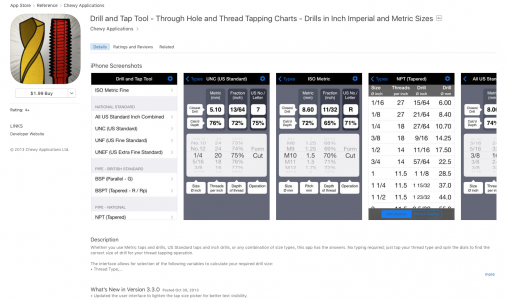- Joined
- Apr 14, 2014
- Messages
- 3,161
MSC Direct has a couple different wall charts available. One is by SPI:
http://www.mscdirect.com/product/details/78010360
and another is by Accupro:
http://www.mscdirect.com/product/details/69811578
I have a couple older ones in the shop by Kennedy. The charts are approximately 22" wide by 32" high. they have all drill types (fractional, metric, numbers and letters) defined in decimal equivalents up to 1". They also have SAE and Metric tap and drill sizes up to 2" and 14MM respectively.
http://www.mscdirect.com/product/details/78010360
and another is by Accupro:
http://www.mscdirect.com/product/details/69811578
I have a couple older ones in the shop by Kennedy. The charts are approximately 22" wide by 32" high. they have all drill types (fractional, metric, numbers and letters) defined in decimal equivalents up to 1". They also have SAE and Metric tap and drill sizes up to 2" and 14MM respectively.


 Wreck said:
Wreck said: